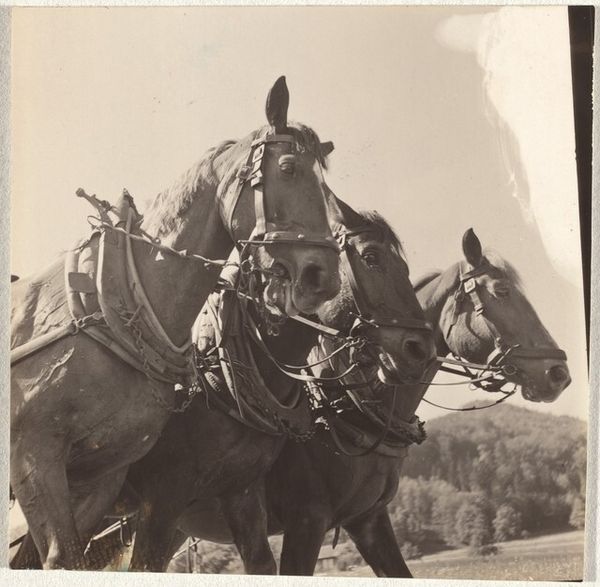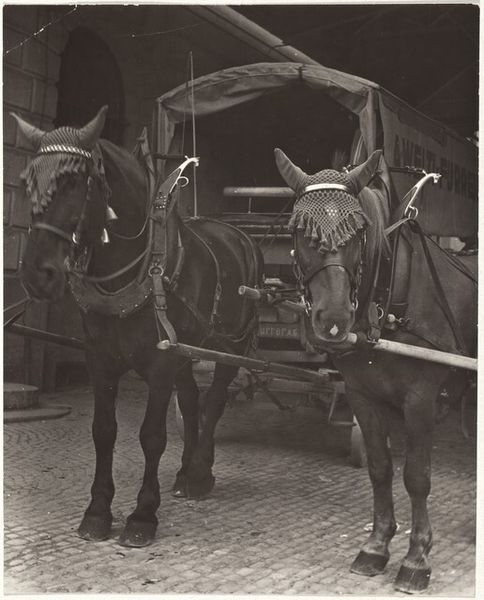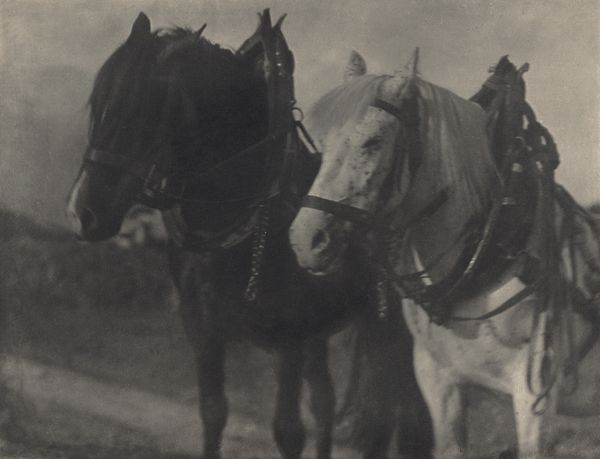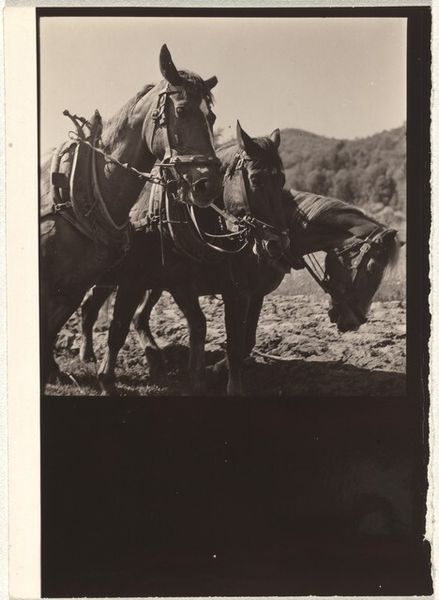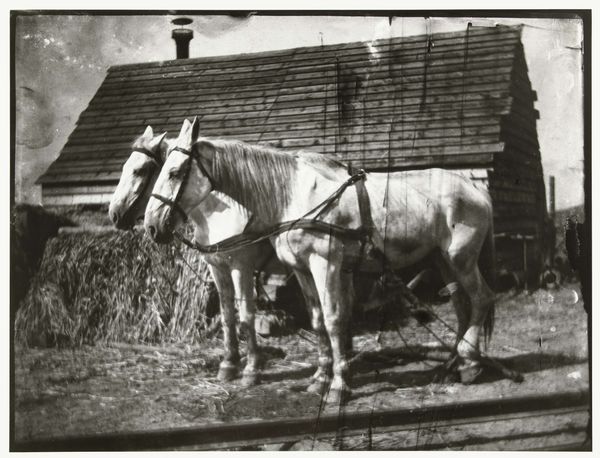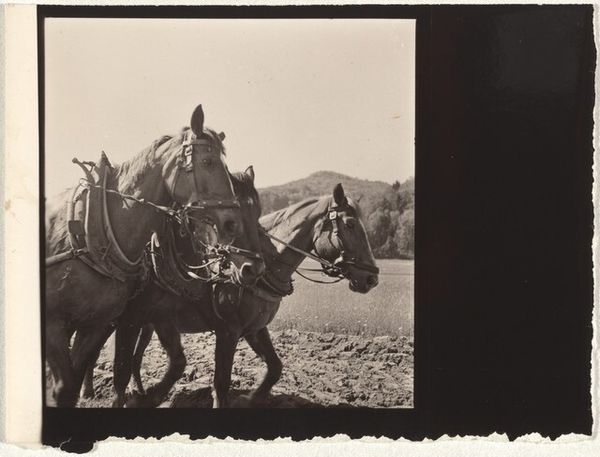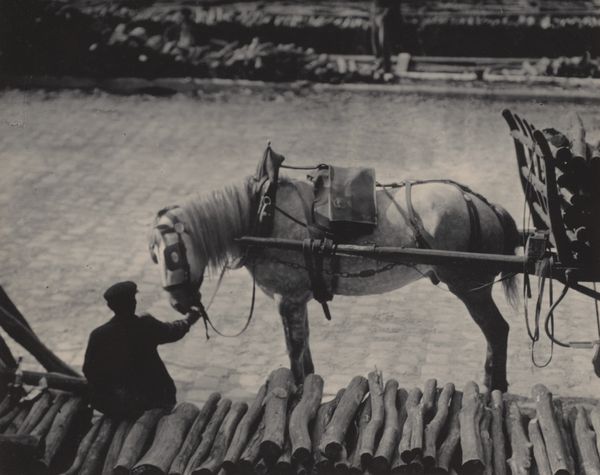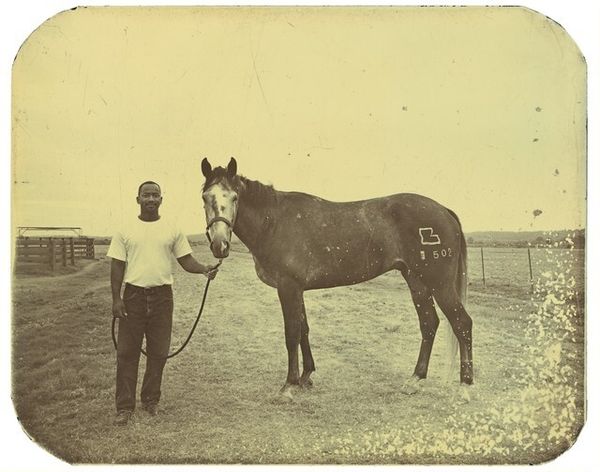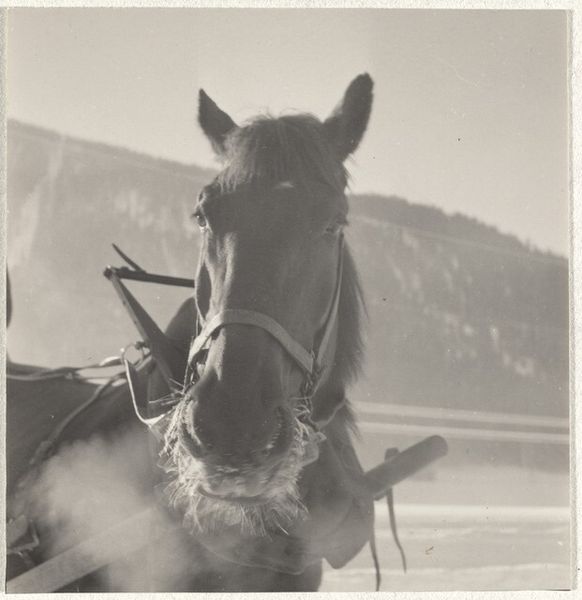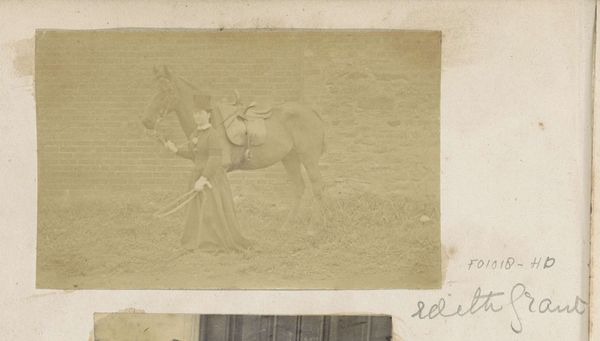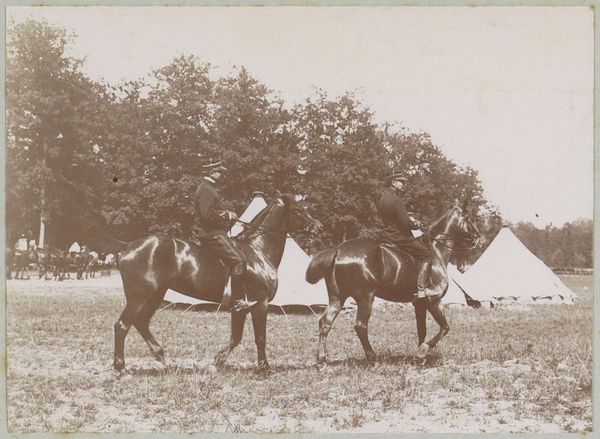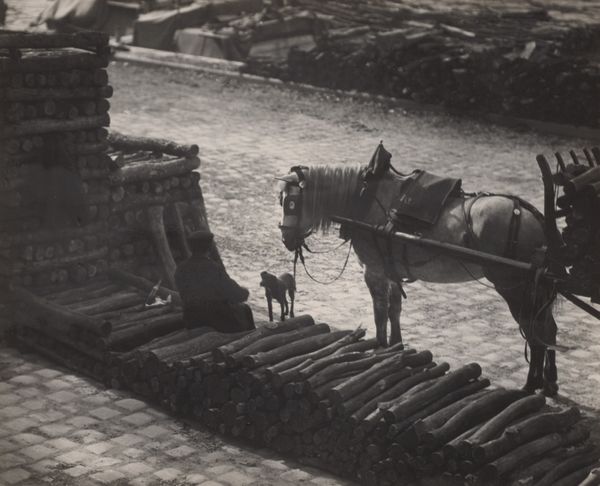![Untitled [Two Horses Drinking] by William B. Post](/_next/image?url=https%3A%2F%2Fd2w8kbdekdi1gv.cloudfront.net%2FeyJidWNrZXQiOiAiYXJ0ZXJhLWltYWdlcy1idWNrZXQiLCAia2V5IjogImFydHdvcmtzLzczYmJlYzAyLTg3NjYtNGU3YS04YTc4LWNjNWY0MzkxNWFmYy83M2JiZWMwMi04NzY2LTRlN2EtOGE3OC1jYzVmNDM5MTVhZmNfZnVsbC5qcGciLCAiZWRpdHMiOiB7InJlc2l6ZSI6IHsid2lkdGgiOiAxOTIwLCAiaGVpZ2h0IjogMTkyMCwgImZpdCI6ICJpbnNpZGUifX19&w=1920&q=75)
photography
#
portrait
#
still-life-photography
#
charcoal drawing
#
photography
#
charcoal
#
graphite
#
realism
Dimensions: 8 3/8 x 6 7/16 in. (21.27 x 16.35 cm) (image)11 7/16 x 8 15/16 in. (29.05 x 22.7 cm) (mount)
Copyright: No Copyright - United States
Curator: Let’s explore this photographic work by William B. Post, “Untitled [Two Horses Drinking]”, likely created in the late 19th or early 20th century. It resides here at the Minneapolis Institute of Art. What's your initial take? Editor: Somber. The monochrome palette coupled with the close framing…it gives a sense of quiet intensity, a study in textures from the horses' dark coats to the rough-hewn trough. It almost verges on the abstract in its simplification. Curator: I'm particularly struck by the visible labor embedded in its production. Consider the equipment, the chemicals, and Post’s deliberate composition of these working animals. It speaks to the industrial age, capturing the role of animals in labor. The harnesses are so integral. Editor: Agreed. The harnesses create strong geometric lines, bisecting the organic forms of the horses' heads, almost in the same manner as early modernist works, or even some cubist approaches. The way the light catches the metal…brilliant. Curator: And notice the relationship between the subjects—two horses, seemingly identical, engaged in the same action. The work highlights their shared role, their cooperative relationship with human labor and production. There's an anonymity afforded by cropping the picture; we have almost no indication of locale or ownership. Editor: Yet that anonymity pushes us toward appreciating their inherent form and their essence. I'm reminded of Eadweard Muybridge's animal locomotion studies, only presented here through a softened lens, literally and figuratively. And this lends to the tonal range too: you could even relate it to chiaroscuro painting. Curator: Absolutely. What the picture brings into focus, then, is our gaze on labor practices. I look at this, and my mind goes to worker rights and how that’s evolved over time. Editor: And I think it serves as an elegant interplay of forms, lines, and tones – ultimately reflecting the eye of the photographer. What's especially fascinating is this duality – a commentary on society viewed through this very careful structural, visual language. Curator: Well, it certainly encourages a multi-layered interpretation – seeing the means through which this moment came into existence. Editor: I agree completely, seeing is always a complex interplay of elements!
Comments
No comments
Be the first to comment and join the conversation on the ultimate creative platform.
